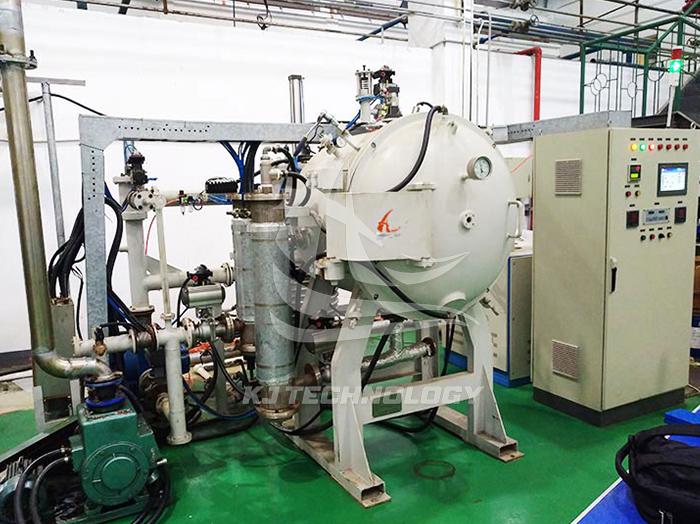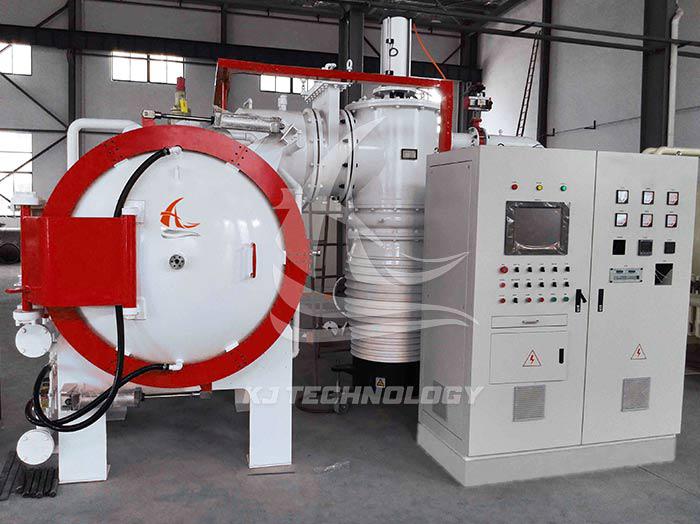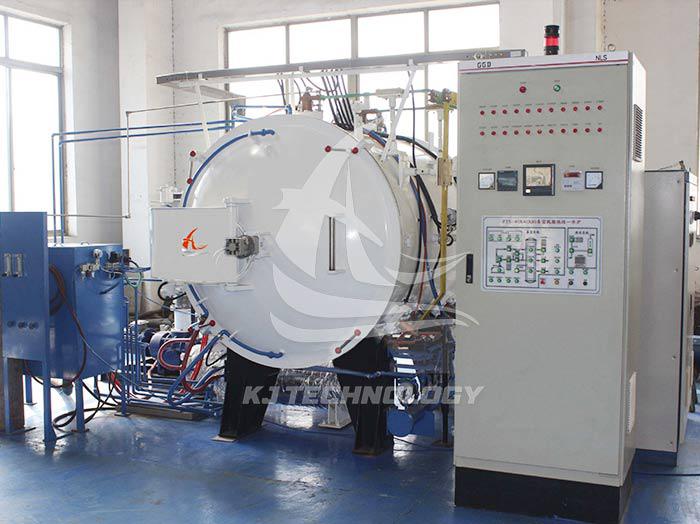What is the working principle of an electric heating vacuum brazing furnace?
 04-02-2025 Author: KJ technology
04-02-2025 Author: KJ technology
The working principle of the electric heating vacuum brazing furnace is mainly based on the electric heating and brazing process in a vacuum environment. The following is a detailed explanation:
1. Core working principle
The electric heating vacuum brazing furnace converts electrical energy into thermal energy through electric heating elements, heats the workpiece in a vacuum environment, melts the brazing material, and fills the weld seam, achieving permanent connection between metals. The working process can be divided into three stages:
Creating a vacuum environment
By using a vacuum system (mechanical pump, Roots pump, diffusion pump, etc.), the furnace pressure is pumped to 10 ⁻¹~10 ⁻ Pa to eliminate the influence of gases such as oxygen and nitrogen on welding, and to avoid oxidation, decarburization, and porosity defects.
Precise electric heating
By using resistance radiation heating or induction heating, the furnace temperature is rapidly raised to the brazing temperature (usually 30-50 ℃ higher than the melting point of the brazing material) through a PID temperature control system, ensuring temperature uniformity (± 1~± 3 ℃).
Implementation of brazing process
In a vacuum state, the liquid brazing material wets the surface of the base material, fills the joint gap through capillary action, and forms a strong metallurgical bond after cooling.
2. Key system synergy
vacuum system
Composition: Mechanical pump, Roots pump, diffusion pump, and vacuum valve
Function: Gradual vacuum pumping, first rough pumping to low vacuum through mechanical pump, and then high vacuum state through Roots pump and diffusion pump.
Heating system
Type: Resistance radiation heating (molybdenum sheet/graphite heating element) or induction heating
Features: Controllable heating rate (5-30 ℃/min), with a maximum temperature of over 1300 ℃.
Temperature controller
Composition: thermocouple, temperature controller, thyristor
Function: Real time monitoring of temperature and automatic adjustment of heating power to ensure process stability.
Cooling system
Method: Water cooling or air cooling
Function: Protect the furnace structure, prevent high-temperature damage, and cool the welded workpiece.
3. Technological advantages
Non oxidation welding: Vacuum environment avoids metal oxidation, improves joint strength and appearance quality.
Precision control: High temperature uniformity, suitable for welding precision components such as aerospace and electronic devices.
Wide applicability of materials: can weld various metals and dissimilar materials such as aluminum, copper, stainless steel, titanium alloy, etc.
Environmental protection and energy conservation: No need for soldering flux, reducing pollution; High electric heating efficiency and low energy consumption.
4. Typical application process
Workpiece preparation: Clean the area to be welded and apply flux (if necessary).
Furnace positioning: Load the workpiece into the furnace according to the process requirements, ensuring even gaps.
Vacuum pumping: Start the vacuum system and gradually pump to the target vacuum level.
Heating brazing: Heat according to the set heating curve to the brazing temperature, and maintain the insulation to complete the welding.
Cooling out of the furnace: Remove the workpiece after natural cooling or forced cooling.








